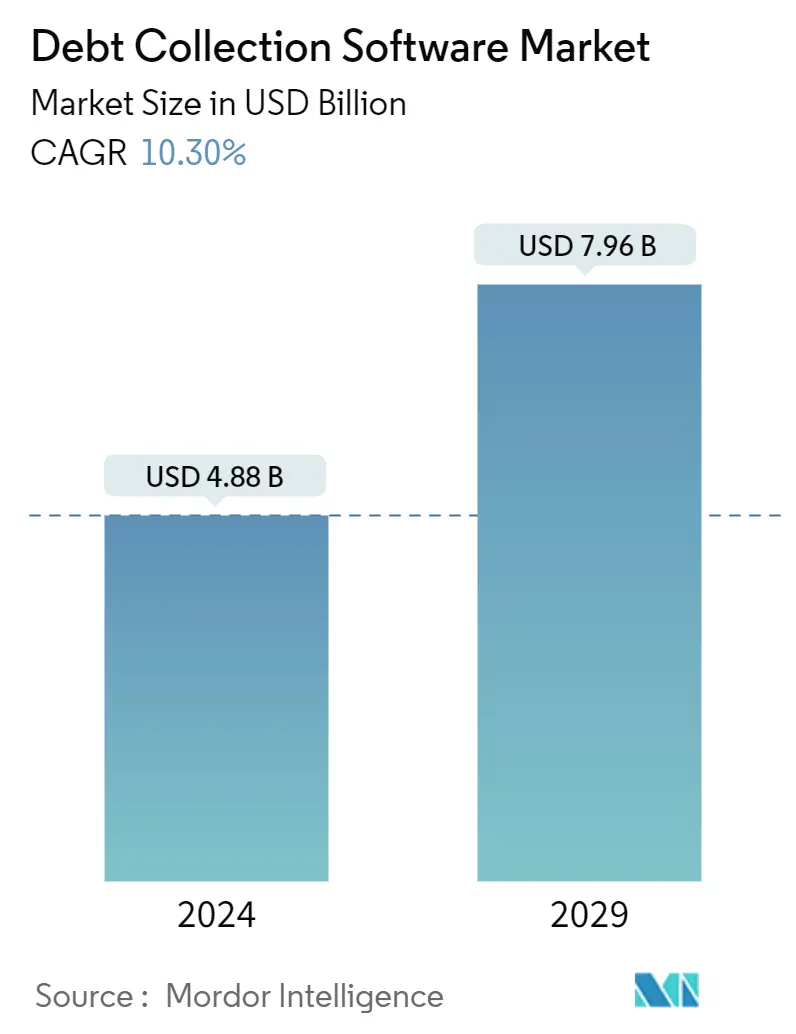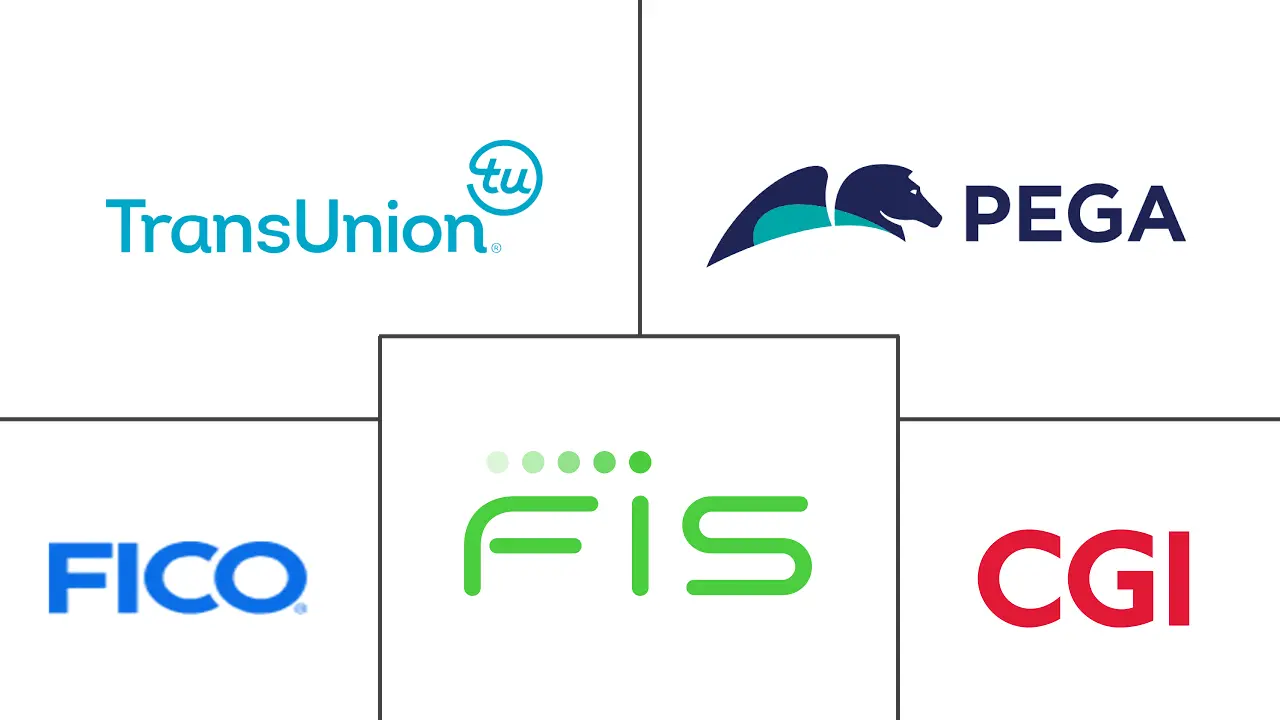Market Size of Debt Collection Software Industry

| Study Period | 2019-2029 |
| Market Size (2024) | USD 4.88 Billion |
| Market Size (2029) | USD 7.96 Billion |
| CAGR (2024 - 2029) | 10.30 % |
| Fastest Growing Market | Asia Pacific |
| Largest Market | North America |
Major Players
*Disclaimer: Major Players sorted in no particular order |
Need a report that reflects how COVID-19 has impacted this market and its growth?
Debt Collection Software Market Analysis
The Debt Collection Software Market size is estimated at USD 4.88 billion in 2024, and is expected to reach USD 7.96 billion by 2029, growing at a CAGR of 10.30% during the forecast period (2024-2029).
- The growth of the market is majorly attributed to the increasing automation in the debt collection process, such as personalizing customer experience through the integration of AI and ML, Continuous innovations to meet consumer demand, predicting default probability through automation, and outsourcing debt recovery to specialized debt collection agencies.
- The most significant beneficiary of the technology-based banking method has been the digital lending market. Data-driven technology, machine learning, and other commitments are critical elements in the evolution of Digital Lending from traditional paperwork and formalities. Models such as P2P lending, SME financing, short-term loans, and credit cards generate a digital loan market.
- Companies can target their loans to customers due to the availability of large amounts of customer data, one of the most significant growth drivers in the digital lending sector. Further, compared to other business models in the field of fintechs, such as payments and finance services, there are greater margins offered by Digital Lending.
- Digitization has become a necessity for banks in view of the growing demand for credit, increased awareness of financial matters, and an expectation that the process will go smoothly. The growth of digital lending is analyzed to create significant borrower data and other data that could be used efficiently in the debt collection software. A practical solution to automating the collection process is using debt collection software or collections CRM that allows lenders to track and follow up with debtors efficiently, predict and prioritize debt recovery, and enable faster collections. This is analyzed to boost the market growth rate during the forecast period.
- The management of debt collection activities has been significantly hindered by legacy systems, which can be described by out-of-date technology, restricted functionality, and inflexible architecture. These limitations have driven the debt collection software market to witness a surge in demand for modern, agile, and adaptable solutions capable of addressing the evolving complexities of debt management.
- Debt collection software has transformed due to COVID-19 because lenders must adapt to the latest risk procedures, including new risk technology and risk-evaluation indicators. The need for unifying various risk solutions, using AI technologies, and enhancing overall implementation processes has enhanced market growth post-pandemic.
